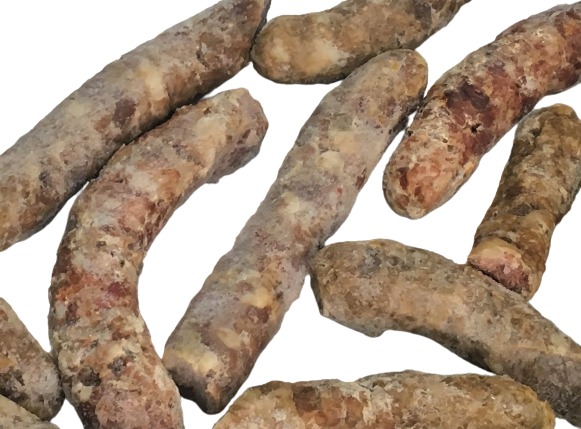Dry-curing meat or as commonly known jerky and processing of livestock products has since long been an ancient Albanian tradition. The meat of all breeds can be dried in various ways, but each animal features a special way of drying.
Pork drying
The pork is cut off into large pieces and a knife is tipped on the meat surface to cut slits across it, both vertically and horizontally. These slits form fairly narrow gaps for sprinkling salt inside them in order to come down to a better and deeper drying. The salt is mixed with minced garlic and black pepper.
Once this step is over, we lay out all the meat pieces in a sendek (wooden box) for 6 days and put a weight on top. This facilitates drawing out as much juice as possible.
After 6 days, the meat pieces are placed in the drying room and hung on trina (racks). We leave it for 25 days. During this time, the room is heated with a wood-burning stove, but without smoke. The drying process should go under heat, rather than smoke.
Following this step, the meat is ready for cooking. It is stored in small wooden boxes in a cool and moisture-free ambience. During the summer, the meat is stored in the refrigerator.
The ideal length of this whole process is really from November to April, since it is a cold-weather which favors the necessary conditions to properly complete this process.
Karragjaku (blood sausage)
Karragjaku (blood sausage), commonly known also as blood pudding or black pudding, is prepared with red meat pork pieces. The meat is cut off manually into small pieces and mixed with spices, adding finely chopped chili pepper, as desired. Once this mixture is prepared and after being stirred for the blood to distribute evenly, it is stuffed with a special gadget into the previously cleaned and prepared pig intestines, or otherwise sausage casings. Next, the obtained product is put in the drying room and hung on racks. The product is left there for 30 days.
Even karragjaku, like meat, is dried under very high heat, without smoke. During the 30-day period, a thin wooden fork-like tool is used to continuously poke holes into the intestines, so as to flow the juices out.
Beef
Beef, unlike pork, undergoes the dry-curing process after being cut off into strips rather than large pieces. The whole meat is left for 24 hours in coarse salt, placing a heavy weight on top to make the juices come out. Next, the beef is placed in the drying room for 25 days, following the same drying process as in the case of the pork.

